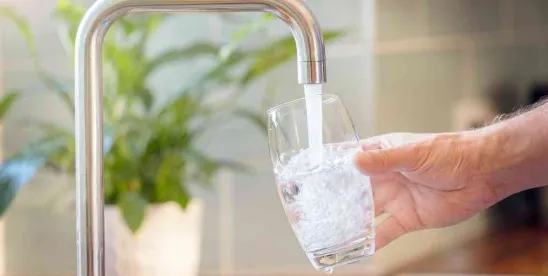California Governor Gavin Newsom’s recent executive order, calling on state agencies to create a comprehensive Water Resilience Portfolio, has set goals for recycling at least 800,000 acre-feet of water per year by 2030 and 1.8 million acre-feet by 2040 while reducing the amount of wastewater discharged to rivers and the ocean. Further advancing the state’s water supply strategy to make California more resilient to drought and climate change, the State Water Resources Control Board (State Water Board) unanimously approved regulations on December 19, 2023, that will allow public water systems to develop treatment protocols to recycle wastewater into safe drinking water.
Known as direct potable reuse (DPR), the approved regulations provide the standards for treating and producing recycled water either directly into a public drinking water system or into a raw water supply immediately upstream of a drinking water treatment plant. DPR relies on an immediate, multi-barrier treatment that can recycle wastewater to drinking water standards within hours. In contrast, indirect potable reuse, the method currently being deployed in major water recycling projects throughout the state, relies on treatment through long-term underground storage or dilution, such as groundwater replenishment or surface water augmentation.
Currently, recycled water offsets nine percent of the state’s water demand, about 728,000 acre-feet per year, and approximately 1.5 million acre-feet per year of treated wastewater is currently discharged to California’s ocean waters. While not all of this wastewater can be recycled, as some water is needed to discharge brine and wastewater in some places provides critical streamflow for fish and wildlife, many communities can tap into recycled water resources to build water supply resilience.
While the State Water Board’s objective is to recycle and replenish safe drinking water that California will lose due to a hotter, drier climate and to protect public health, there are hurdles to overcome before the state fully embraces its water reuse potential, including the public’s perception of recycled wastewater coined as “toilet-to-tap,” a term critics used in opposition to water recycling. In response to this concern, the proposed DPR regulations include robust maintenance and monitoring requirements to control pathogens during wastewater treatment. This criteria is consistent with the State Water Board’s extensive research with members of the state’s recycled water community concerning potable and non-potable application.
Relatedly, DPR may further serve to be an invaluable link between water supply availability and certain land-use decisions that require documentation of adequate water supplies for large development projects. For instance, pursuant to Senate Bill 610, local California jurisdictions acting as lead agencies for certain projects subject to the California Environmental Quality Act are responsible for ascertaining whether adequate water supplies exist to serve the project. Senate Bill 610 requires water service providers to prepare a water supply assessment (WSA) for such projects. Ultimately, the goal of the WSA is to evaluate whether the public water system’s total projected water supplies available during normal, single-dry and multiple-dry water years during a 20-year projection are sufficient to meet the projected water demand associated with the proposed project. The State Water Board’s approval of DPR will offer an additional source of water supply supporting this important area of land use planning.
The State Water Board’s approval of the DPR regulations will still need to be approved by California’s Office of Administrative Law to ensure that the State Water Board has complied with the rulemaking procedures set forth in California’s Administrative Procedure Act. The OAL rulemaking process is expected to start by Spring 2024 with final approval of the DPR regulations anticipated in Fall 2024.





 />i
/>i
